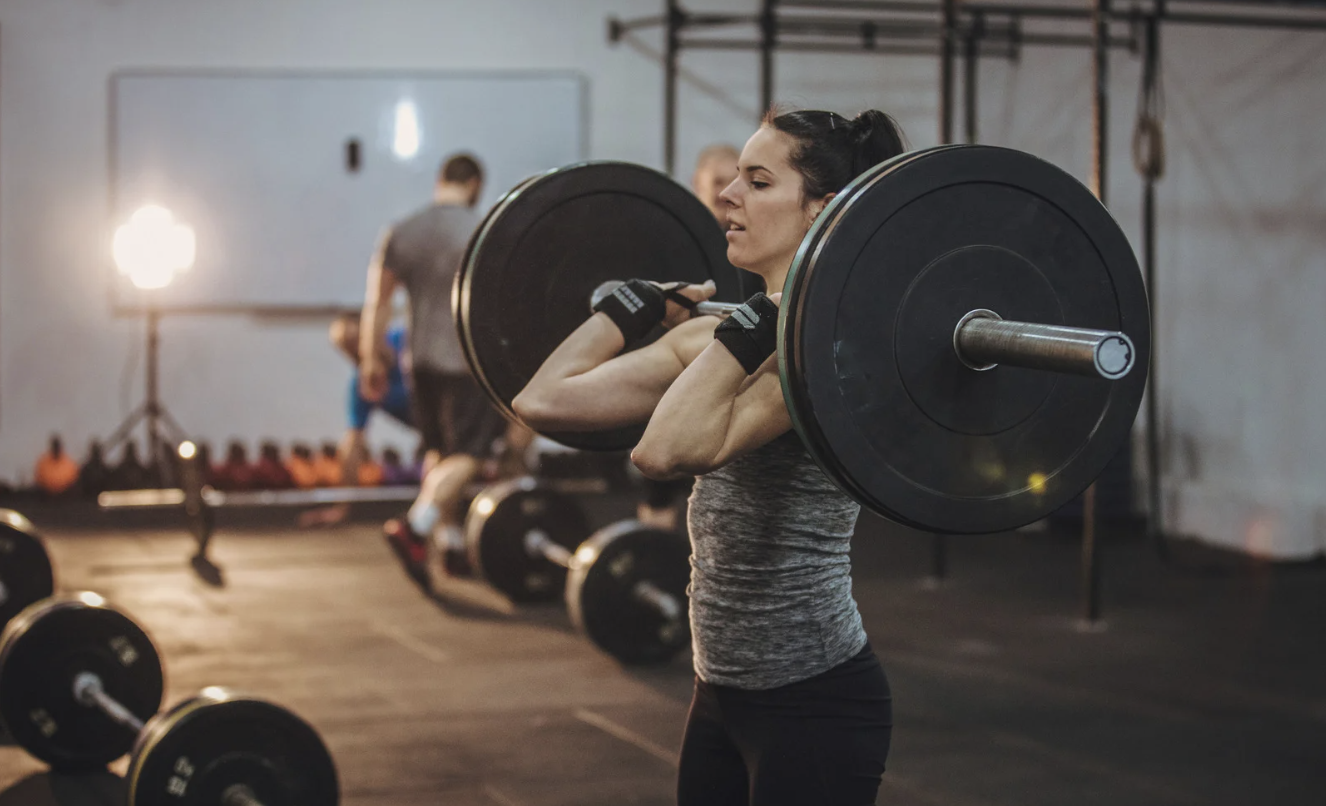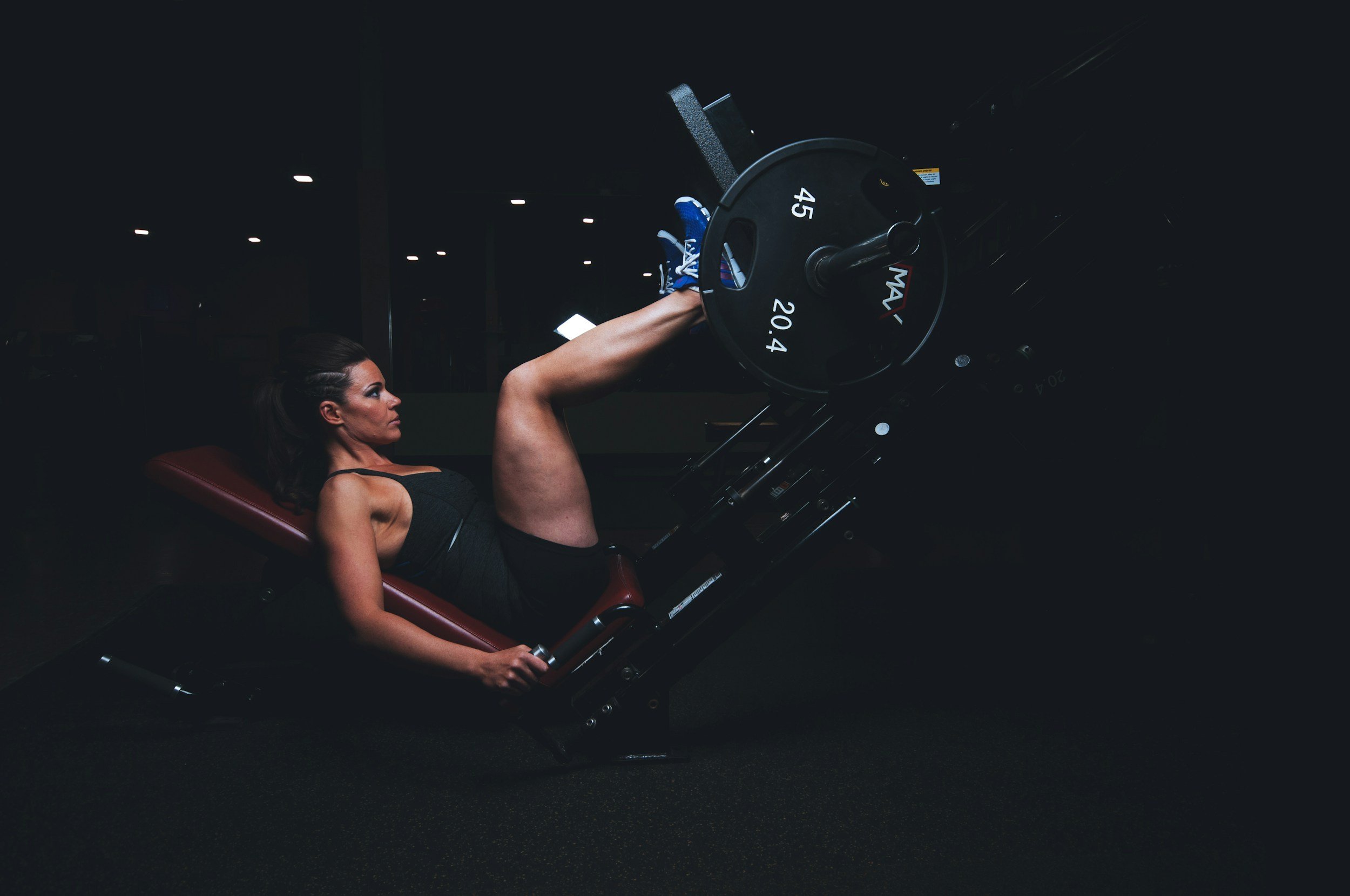Deadlift Strength for Women: 6 Proven Tips To Hit A New PR
So, you're looking to boost your deadlift PR? Awesome. If you're a woman reading this, you may already know the satisfaction of out-lifting a few unsuspecting guys in the gym. There's just something about the surprised (and maybe slightly impressed) looks you can get when you pull that loaded bar off the ground. But even beyond that, the deadlift is incredible. It builds serious strength, works practically every muscle on your backside, and yeah, it makes you feel unbelievably cool. If you're ready to stop just going through the motions and really start seeing your deadlift climb (and maybe earn a few nods of respect in the process), you're in the right place. I've got 6 solid tips that can help you smash those personal bests faster than you might think. Let's get into it.
1. Increase Your Deadlift Frequency
Think about how you get better at anything. Whether it's learning a new recipe or mastering a skill at work, practice usually plays a big role. It's the same with deadlifts. The more consistently you perform the movement (with good form, of course), the better you're going to get.
Imagine a quarterback trying to improve their throwing accuracy. They're going to see more progress practicing several times a week compared to just once. Lifting works in a similar way. By making deadlifts a more regular part of your training you'll build better technique and that crucial mind-muscle connection that allows you to move heavier weights.
Basically, by increasing the frequency of deadlift training, you can stimulate neurological adaptations and improve your technique faster. You are teaching your body how to lift more weight over time.
How Often Should You Deadlift Heavy
Now, I'm not saying go in there and try to pull a truck every day. That's a recipe for feeling like you were hit by a truck. Deadlifts are taxing, like that one relative who needs a three-hour goodbye. A good general guideline is to aim for one day a week where you focus on heavier deadlifts, weights that are 80% of your one-rep max or higher.
However, you can often incorporate deadlifts or variations of the movement with lighter weights on another one or two days during the week. This is a great opportunity to really focus on your technique, address any weak points you might have (we'll talk about those "sticking points" later), or work on your speed and explosiveness with lighter, faster pulls.
A Note for Beginners: If you're new to deadlifting, the weights you're currently lifting likely aren't as taxing on your system. You might find that you can comfortably deadlift "heavy" (relative to your current strength level) twice a week. Just pay attention to your body and don't push through pain.
2. Prioritize Technique
The deadlift sometimes gets a bad rap for being "dangerous." Honestly though, a lot of that comes down to people not doing it correctly. When you really nail your form and technique, it's not only a safe exercise, but it can actually make your back stronger and help prevent injuries down the road. Think of it as building a solid foundation. You wouldn't want to build a house on shaky ground, right? Good technique is the bedrock of a strong and safe deadlift. It's absolutely key to unlocking your full potential with this lift.
Here's the thing: when your form and technique are dialed in, your body actually feels safe to move more weight. Think about it, if your body is in a compromised position, it's going to put the brakes on. It's a natural protective mechanism. But when everything is aligned correctly, your muscles can work together efficiently, and your nervous system gets the green light to unleash more power. It's like your body is saying, "Okay, we're in a good position here, let's do this!"
I'm planning on doing another article that really breaks down the setup and how to do the deadlift the right way. Keep an eye out for that. In the meantime, a really helpful thing you can do is record yourself lifting sometimes. It's like when you hear your voice on a recording and you're like, "Wait, that's what I sound like?" Seeing yourself lift can give you a much clearer picture of what's actually happening.
Also, if your main goal is to get stronger, make sure you're fully resetting the weight between each rep. Touch-and-go deadlifts shouldn’t be the goal here. When you reset, you take the momentum out of the lift, and you have to work harder to get the bar moving from a dead stop. This not only builds more strength but also makes it easier to focus on your form for each individual rep. So, after you finish a rep, take a quick second, get yourself set again, make sure everything is engaged, and then pull.
3. Training Your Weaknesses
You most likely have parts of the deadlift where they struggle more than others. Maybe the bar feels glued to the floor, or maybe it gets moving but then just stops before you lock out. Identifying these "sticking points" is key to getting stronger. You can either throw in exercises to target these weaknesses during your regular workouts, or you could even spend a few weeks really focusing on bringing those areas up.
The most common spots where people get stuck are right off the floor or at the very top, the lockout. Here are a few ways to work on those:
If You Struggle Getting the Bar Moving
Deficit Deadlifts: This is my favorite variation if you are weak off the floor. Stand on something like a low platform or some weight plates (around 2 inches is usually good). This forces you to pull from a lower position, which strengthens that initial pull off the ground. Make sure you use lighter weight than normal.
If You Can't Seem to Lock Out
Block Pulls or Rack Pulls: These involve setting the bar up higher, either on blocks or the pins in a power rack. Because you're not pulling as far, you can usually lift more weight. This helps you get stronger in that top part of the lift.
Using Chains or Bands: By adding chains or bands to the bar you will essentially be increasing the difficulty towards the top of the lift, and putting more emphasis on the lockout portion.
If You Get Stuck Somewhere in the Middle
Pause Deadlifts: For this variation you will perform the deadlift normally but pause the bar wherever your “sticking point” is. Hold it there for a second or two. This forces you to build strength and stay tight and hold tension in that specific weak area.
4. Incorporate Speed Deadlifts
Want to get stronger off the floor or power through a sticking point? Think about building explosive power. That initial burst of force that gets the bar moving. That's exactly what speed deadlifts are designed to do, and it can have a surprising impact on your overall deadlift strength. By training your body to generate force quickly with lighter weights, you're essentially teaching your nervous system to fire those muscle fibers more efficiently when you tackle heavier loads. It's like priming the engine for a bigger lift.
The way to do these is to move submaximal weights, around 65-70% of your one-rep max, with maximal speed and intent. The goal isn't to grind out reps; it's to move the bar as explosively as possible. A good example of how to incorporate these could be something like 8 sets of 2 reps, with about 45 seconds of rest between sets. This allows you to focus on that speed and power without building up too much fatigue. These can even be incorporated with bands or chains for an added layer of challenge.
5. Improve Your Grip Strength
You can have a powerful back and legs, but if your hands can't hold onto the bar, that heavy deadlift isn't going to happen. Grip strength is a really common roadblock for lifters. I often advise my clients to use a regular double overhand grip (both palms facing you) for as long as possible. This helps your grip get stronger naturally as you progress. However, there comes a point where your grip might start to lag behind. So, what are your options?
One solution is the switch grip (one hand overhand, one underhand). This can significantly improve your ability to hold onto the bar. If you use a switch grip, a good practice is to alternate which palm is facing down. This can help prevent muscle imbalances over time. Even if you rely on the switch grip for your heaviest lifts, try to use the double overhand for your lighter sets and warm-ups to keep building that baseline grip strength.
Another tool is lifting straps. The same principle applies here: use them strategically when your grip is truly the limiting factor, not as a crutch for every set.
Beyond just gripping the bar during deadlifts, there are other exercises you can incorporate to build a stronger hold:
Deadhangs
Simply hang from a pull-up bar or rings with your arms straight and feet off the ground. Doing this a few times a week and trying to increase your hold time can make a difference in your forearm strength.
Farmer Carries
Grab heavy dumbbells, kettlebells, or a trap bar and walk for a set distance or time. As you get stronger, increase the weight, distance, or time. It's a simple but effective way to build overall grip strength among other things.
Plate Pinches
Take two weight plates and pinch them together by the smooth sides, with your fingers on one side and your thumb on the other. Hold for as long as you can.
Wrist Curls
You can do these seated or kneeling with dumbbells or a barbell, holding the weight with your palms facing up. Rest your forearms on a bench or your legs and curl your wrists up and down.
Romanian Deadlifts (RDLs)
Because RDLs often involve lifting relatively heavy weight, they can also be a great exercise for building grip strength.
All of these are great supplemental ways to increase your grip strength, but honestly one of the best is to keep practicing your deadlift with a pronated (double overhand) grip.
6. Lift Heavy
This might seem obvious, but it's worth saying: if you want to deadlift more weight, you're going to have to lift HEAVY. Getting comfortable with weights that are a good challenge , think around 80% of your max or more, is crucial for building serious strength. Like I mentioned before, if you're not a beginner, hitting these heavier weights once a week is generally a good guideline.
When you're lifting closer to your max, you'll typically be doing fewer reps. This is actually more effective for building pure strength compared to grinding out a bunch of lighter reps. Lifting heavy teaches your body to recruit more muscle fibers all at once and helps your muscles work together more efficiently to control and move that weight. Over time, your body becomes better at this, and that's how you get stronger. Some examples of what heavy sets might look like are:
5 reps at 80% of your max
4 reps at 83% of your max
3 reps at 85% of your max
2 reps at 88% of your max
These are just a few ideas. There are plenty of ways to structure your heavy lifting, and you can definitely play around with the intensity.
Alright, that wraps up my top tips for boosting your deadlift strength! I really hope these help you smash some personal bests and get past any plateaus you might be facing. If you end up trying any of these out, I'd love to hear which ones you find the most helpful in your training. And hey, if you're looking for a structured plan that includes deadlifts, I've got a free 6-week program you can grab by clicking the link below!
Ready to take your training to the next level?
Check out my 6-Week Training Program designed to build strength, muscle, and confidence. Click the link below to get started today!







